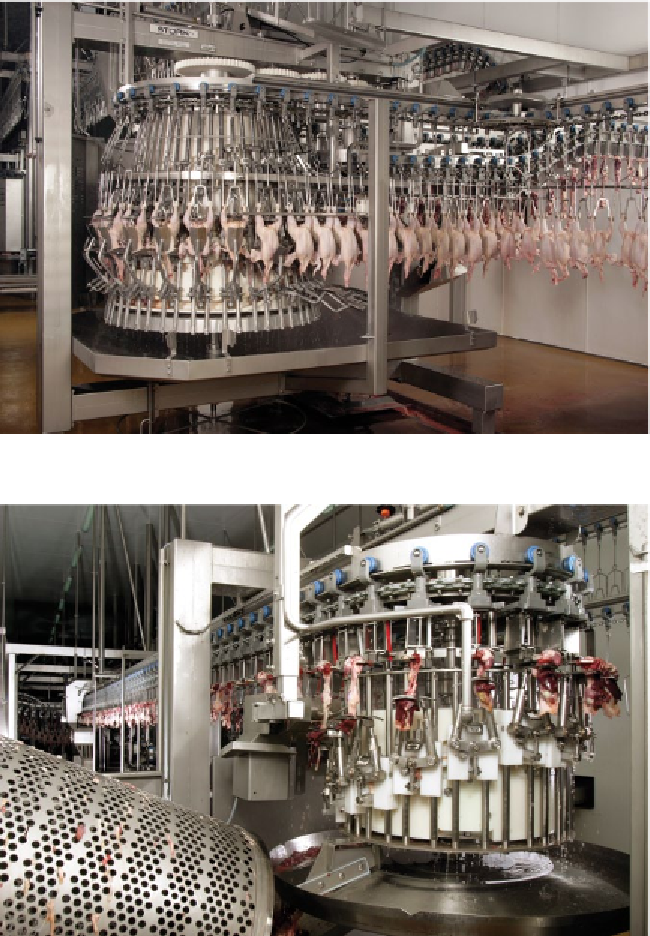Agriculture Reference
In-Depth Information
Figure 10.8
High-speed automated evisceration (Reproduced with permission from Stork Poulty Processing, Boxmeer, The Netherlands).
Figure 10.9
Liver harvesting with drum washer.
washed in chlorinated water (in the EU, the maximum
concentration of chlorine allowed in potable water is
0.5 ppm), is sorted, chilled and packed.
The eviscerated carcase is spray washed, internally and
externally (Fig. 10.10). This gives a visually clean bird and
also decreases carcase contamination. The carcase should
be washed not only after final inspection but between the
different stages involved in evisceration, as it has been
shown that by doing so the numbers of coliforms and
salmonellas on carcases are reduced because there is insuf-
ficient time for attachment to occur. A suitable carcase
washer comprises a small cabinet containing an appropri-
ate arrangement of spray nozzles (Fig. 10.11 and 10.12).
are damaged. This is not an uncommon occurrence
because the machinery used is not able to adjust for the
natural variation in the size of birds being processed.
A new type of equipment, however, holds the birds
horizontally by the head and hocks so that, when the
viscera are removed from the body cavity, they emerge
sideways. They are placed on a tray beside the bird
rather than hung with it and hence do not come into
contact with the carcase.
It is at this stage that a further inspection takes place
which will observe changes in the internal organs. After
inspection, the viscera are separated into edible and
inedible offal. The edible fraction, sometimes being

